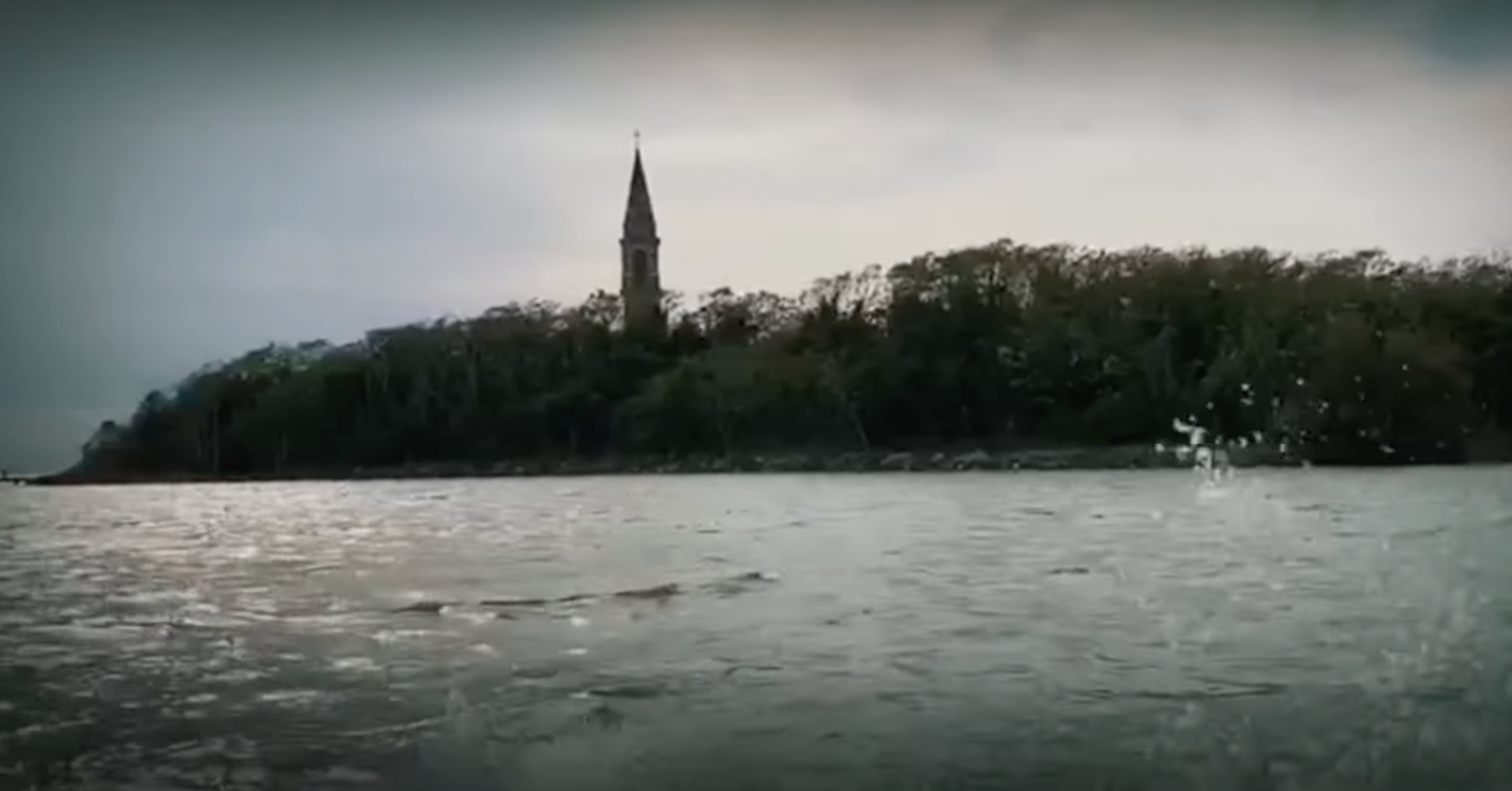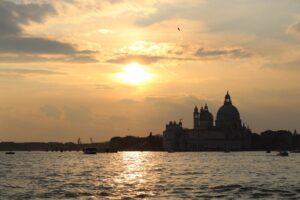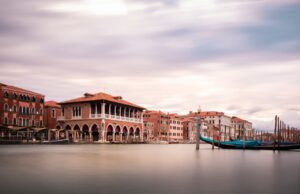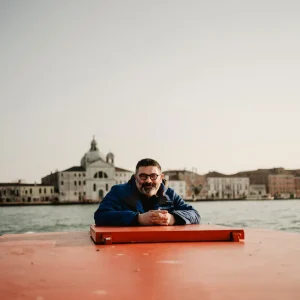Poveglia Island — Venice’s Dark Mirror Between History and Legend
Venice is an archipelago of stories — Murano with its glowing furnaces, Burano with its painted lacework of houses, Torcello with its ancient mosaics. But among these islands, one name stands apart, carrying the weight of mystery, fear, and fascination: Isola di Poveglia.
Just south of the city, halfway to the Lido, this small island has been called “the most haunted island in the world.” For centuries, Venetians spoke its name in hushed tones. Yet beneath the ghost stories lies a reality far more poignant — a history of refuge, plague, quarantine, and abandonment. Poveglia is where the lagoon reveals its darkest truths and its deepest humanity.
Today, the island remains closed to the public, its silhouette rising quietly against the horizon. But the fascination endures. Let’s uncover the true story of Poveglia — where history, legend, and imagination intertwine like mist over the lagoon.
📍 1. Where Is Poveglia?
Poveglia sits in the southern Venetian lagoon, between Malamocco and the Lido inlet. From the deck of a boat heading toward Chioggia, its low shape appears against the horizon — a cluster of crumbling buildings, a lone bell tower (long converted into a lighthouse), and a tangle of green overgrowth.
From afar, it looks peaceful. But locals know better: this island has seen the full cycle of Venetian history — glory, plague, empire, and decay. Even now, fishermen avoid its shores, and its still waters seem to hold their breath.
🏚️ 2. Early History — A Refuge in the Lagoon
The first traces of Poveglia appear around 421 AD, when refugees from the mainland fled barbarian invasions. Like nearby Torcello and Malamocco, it began as a small settlement of fishermen and farmers living in wooden houses raised above the marshes.
By the Middle Ages, Poveglia was home to several hundred inhabitants. They harvested salt, tended vineyards, and traded fish and vegetables with Venice proper. Its people were humble but prosperous — living between land and water, as Venetians always have.
That peace ended abruptly in 1379, during the War of Chioggia between Venice and Genoa. The Republic evacuated Poveglia’s residents to Venice and fortified the island for defense. From that moment on, it would never again be an ordinary home.
☠️ 3. Lazaretto — The Plague Years
Venice’s global trade brought wealth — and contagion. The city was repeatedly struck by bubonic plague, which decimated its population in 1348, 1576, and 1630. To contain outbreaks, the Republic pioneered an early form of public health: lazaretti — quarantine islands where the sick and the suspected were confined.
Poveglia entered this system officially in 1776, serving as a quarantine station for ships arriving from abroad. Passengers, sailors, and goods were detained here for inspection. If illness appeared, the island became a temporary hospital — and, for many, a final resting place.
During the worst epidemics, Poveglia turned into a vast plague pit. Contemporary accounts speak of carts carrying bodies, pyres burning night and day, and the air filled with smoke and incense. Local lore insists that the island’s soil is half ash, half human remains — a haunting metaphor for a city built on both beauty and mortality.
Whether the numbers — “tens of thousands buried” — are myth or truth, the legend of Poveglia as the Island of the Dead became part of Venetian collective memory.
⚔️ 4. Napoleon and the 19th Century — From Quarantine to Arsenal
When Napoleon’s troops conquered Venice in 1797, the island’s function changed yet again. The French army used its solid buildings as a military depot and stored gunpowder and weapons there. The bell tower, once a spiritual symbol, became a practical lighthouse.
After the fall of Napoleon, the island passed to Austrian, then Italian authorities. By the mid-1800s, Poveglia was once again a lazaretto — its role as a place of isolation stubbornly persistent, as if the lagoon itself had chosen its destiny.
🧠 5. The Asylum Years — Myths and Shadows
The most infamous chapter in Poveglia’s story begins in the early 20th century. Between the 1920s and 1960s, the island hosted a small hospital facility — part asylum, part geriatric ward — for patients with mental illness and the elderly.
Over time, the isolation and decay of the buildings fed the imagination. Tales emerged of deranged doctors, cruel experiments, and restless spirits. According to popular legend, a physician tormented by guilt leapt from the bell tower after hearing the voices of the dead.
These stories — retold in ghost-hunting shows and travel blogs — made Poveglia infamous as “the most haunted island in the world.” Yet Venetian historians point out that little of it is documented. The asylum existed, yes, but there is no evidence of supernatural horror — only the everyday tragedy of illness and neglect.
Still, the imagery endures: an island where pain and memory linger in the air like mist.
👻 6. The Haunted Reputation — Between Folklore and Fear
Poveglia’s blend of plague pits, quarantine ruins, and asylum legends proved irresistible to storytellers. Paranormal TV programs like Ghost Adventures and Scariest Places on Earth filmed episodes here, cementing its reputation in pop culture as “Venice’s island of ghosts.”
Fishermen tell of strange lights flickering near the shore. Visitors claim to hear bells that no longer ring. Even the silence feels heavier here — as if the island itself remembers.
Whether you believe the tales or not, standing near Poveglia stirs something primal: awe mixed with melancholy. It is a place where history has not yet faded — where the lagoon’s calm surface hides centuries of human struggle.
📜 7. Fact vs. Legend — The Truth Beneath the Myths
Let’s separate the verified history from legend:
- ✅ True: Poveglia served as a quarantine island (lazaretto) in the 18th and 19th centuries.
- ✅ True: Thousands of plague victims died and were buried here.
- ✅ True: A medical facility operated here in the 20th century.
- ❌ Unverified: Stories of sadistic doctors, lobotomies, and mass hauntings.
To Venetians, the island’s darkness is not supernatural — it is historical. Poveglia embodies the Republic’s pragmatic, if brutal, methods of survival: isolating illness to save the city. It is a monument to resilience, not horror.
🌿 8. Abandonment and Controversy — Poveglia in Modern Times
When the hospital closed in 1968, the island was abandoned once again. Nature took over: ivy crept across walls, floors collapsed, and the lagoon slowly reclaimed its own. Birds nest in the bell tower; reeds sway where courtyards once stood.
In the 21st century, Poveglia became a subject of heated debate. The Italian government attempted to auction a long-term lease in 2014, inviting private investors to restore it. A grassroots movement, Poveglia per Tutti (“Poveglia for Everyone”), rallied to stop the sale, insisting the island should remain public and protected.
Proposals ranged from luxury hotels to cultural parks to memorial gardens. Yet none came to fruition. Today, the island sits in limbo — officially closed, occasionally visited by researchers or firefighters, but off-limits to tourists.
💭 9. What Poveglia Means to Venetians
For many Venetians, Poveglia is less about ghosts than about collective memory. It stands as a mirror of the city’s relationship with disease and survival. In times of crisis, Venice always turned to its lagoon — transforming islands into barriers that protected the living from the dying.
This historical awareness resurfaced during recent pandemics, when locals recalled how Poveglia once guarded the city’s health. The island is both a warning and a witness — a reminder that beauty and fragility coexist in every Venetian story.
Movements like Poveglia per Tutti also highlight a deeper issue: the fight to keep Venice’s heritage in public hands, not sold as spectacle. For them, Poveglia is not a ghost island — it is a civic soul.
🚤 10. Can You Visit Poveglia?
Officially, no — the island is unsafe and closed to the public. Its structures are collapsing, and entry is restricted by the local authorities.
But there are respectful ways to experience its presence:
- By Boat: During a private Venice lagoon tour, you can circle Poveglia and hear its story from the water — a haunting but beautiful experience.
- By Kayak: Some eco-tours and local guides offer paddling routes near the island, ideal for photography and quiet reflection.
- From Afar: You can spot its outline from the Lido or Malamocco, especially at sunset when the bell tower glows orange against the horizon.
Even from a distance, Poveglia captures the imagination. As your boat drifts past, it feels like Venice is whispering one of its oldest secrets.
🏗️ 11. The Future of Poveglia — Between Memory and Renewal
The question of what to do with Poveglia remains unresolved. Ideas continue to circulate:
- A public park with walking trails and educational exhibits on Venice’s health history.
- A cultural center dedicated to art, science, and remembrance.
- Or simply, leaving it untouched — allowing nature and time to heal the scars of the past.
The challenge lies in balance. How can Venice honor the island’s painful history without turning it into a macabre attraction? How can memory coexist with renewal?
Perhaps the answer is restraint — to let Poveglia remain what it is: a quiet guardian, a chapter of history written in water and silence.
🌫️ 12. Conclusion — The Island That Reflects Venice
Poveglia is Venice’s dark mirror. Where Murano shines with glass and Burano bursts with color, Poveglia whispers of plague, isolation, and endurance. It is a reminder that behind every glittering façade lies a shadow — and that Venice’s beauty has always lived side by side with death and rebirth.
To sail past Poveglia is to witness history itself — not the tourist version, but the real Venice: complex, tragic, resilient. Its crumbling bell tower still watches over the lagoon like a sentinel of memory.
👉 Explore the Venetian Lagoon with Tour Leader Venice — where every island, even the silent ones, has a story to tell.
Because Venice isn’t just a city to photograph. It’s a living archive — and islands like Poveglia remind us that even in silence, the past still speaks.
❓ FAQs — Poveglia Island, Venice’s Dark Mirror
Can you visit Poveglia Island in Venice?
No — Poveglia remains officially closed to the public due to safety concerns. Its buildings are in ruins, and access is restricted by the Venetian authorities. However, you can still experience its haunting beauty by private boat. During our Venice Tour of the Lagoon — Discover the Hidden Gems, we sail near Poveglia and share the true stories behind its history and legends.
Why is Poveglia Island called “the most haunted island in the world”?
That reputation comes from centuries of myth-making. Poveglia once served as a plague quarantine station and later as a psychiatric hospital, which gave rise to ghost tales and eerie folklore. While there’s little proof of supernatural events, the island’s real history — plague victims, isolation, and abandonment — has fueled its haunting mystique.
What was Poveglia used for throughout history?
Over 1,500 years, Poveglia has been a refuge for war survivors, a plague quarantine site, a Napoleonic arsenal, and eventually a psychiatric hospital until the 1960s. Each era left its mark, turning this small island into a powerful symbol of Venice’s struggle between beauty and survival. Today, it stands abandoned — a reminder of the lagoon’s darker, more human side.







